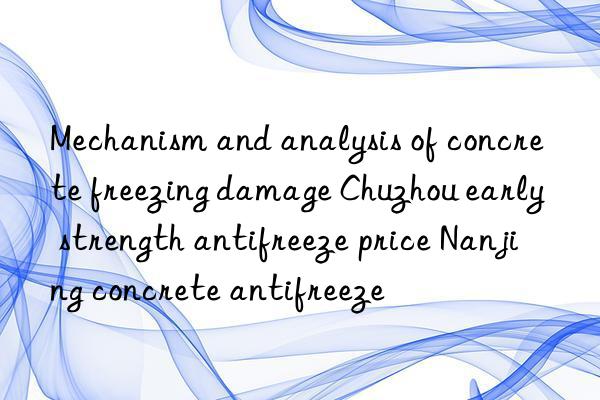
The reason why the concrete mixture can gradually set and harden after pouring until it reaches its final strength is due to the hydration of the cement. The speed of cement hydration is not only related to the composition and mix ratio of the concrete itself, but also closely related to the external temperature. When the temperature rises, hydration accelerates and strength growth accelerates. When the temperature drops to 0°C, part of the water present in the concrete begins to freeze, gradually changing from liquid phase (water) to solid phase (ice). , at this time, the amount of water participating in the hydration of cement decreases, the hydration slows down, and the strength growth slows down accordingly. As the temperature continues to decrease, when the water present in the concrete completely turns into ice, that is, completely changes from the liquid phase to the solid phase, the hydration of the cement basically stops, and the strength of the concrete will no longer increase at this time. Since the volume of water increases by about 9% after turning into ice, it also generates an expansion stress of about 2.5MPa. This stress is often greater than the initial strength value formed inside the concrete, causing the concrete to be damaged to varying degrees (that is, early freezing damage). . In addition, when the water turns into ice, larger ice particles will be produced on the surface of the aggregate and steel bars, weakening the bonding force between the cement slurry and the aggregates and steel bars. When the ice melts, various voids will be formed inside the concrete, which will reduce the durability of the concrete.
Many scholars at home and abroad have conducted a large number of tests on concrete constructed in winter. The results show that before the hydration of cement in frozen concrete stops, the concrete reaches A minimum critical strength (which our country stipulates is no less than 30% of the design strength and no less than 3.5MPa) can prevent the concrete from freezing damage and the final strength will not be lost. Therefore, extending the liquid form of water in concrete so that it has sufficient time to react with cement to achieve the minimum critical strength of concrete and reducing the content of free water in concrete is the key to preventing freezing damage to concrete. In actual projects, according to specific circumstances, two methods, thermal storage method and adding antifreeze, are usually used to ensure the liquid state of water. The function of antifreeze is to lower the freezing point of the mixture, refine the ice crystals, maintain a certain amount of liquid water in the concrete at negative temperatures, slowly hydrate the cement, and improve the microstructure of the concrete, thereby allowing the concrete to reach a minimum critical strength. , the strength will continue to grow and reach the design strength when the temperature rises in the coming year.

 微信扫一扫打赏
微信扫一扫打赏

